The City of Canals and Romance
It was the most important commercial and cultural link between Europe and Asia in the late middle ages. It was also the largest port in Europe at the time. Venice is one of the earliest tourist destinations and cultural hubs. It is also one of the most distinctive places in terms of its ecology, architecture, and history. UNESCO designated both the city of Venice and the lagoon surrounding it as World Heritage Sites in 1987, recognizing their inclusion in the aesthetic and architectural legacy of the entire human race. Now, let’s explore this beautiful city.
VENICE HISTORY
The 5th Forest Settlement was started by people who had to leave Venice because of attacks from the north. Until the 10th century, it was a part of the Byzantine Empire. From controlling a trade route to the Levant, Venice became the leader of a colonial empire based on Crete, Euboea, the Cyclades, the Ionian islands of Zacharia, and Epirus after the Fourth Crusade (1202–1204). After a hundred years of fighting for trade control in the Levant and the eastern Mediterranean, it beat Genoa in 1381. In the 1500s, the Republic of Venice grew into a sizeable Italian state by taking over neighbouring lands.
Between the 15th and 18th centuries, Venice lost its eastern lands to the Ottoman Turks, with whom it fought on and off.
In 1715, the last piece of the Aegean was given up by Venice. The Republic came to an end in 1797, and Austria was given control of the land. Venice was then incorporated into Napoleon’s Kingdom of Italy in 1805, but was returned to Austria in 1815. Italy finally received control of the city in 1866.

How to Get into Venice
Venice is one of the most popular places to visit in Italy. Because of how its transportation system is set up, you can’t drive around Venice. But getting to the city is a different story. You can get there in several ways. You can get there by Plane, Train, bus, car, and boat.
By Plane
Marco Polo Airport of Venice
Marco Polo is the name of the airport that serves Venice, a tourist hub. It is on the Italian mainland and is one of the biggest and busiest airports in Northern Italy. At Venice Marco Polo Airport, more than 40 airlines fly in and out. Alitalia, U.S. Airways, British Airways, Emirates, Belle Air, and Lufthansa all fly to dozens of international.


Treviso Airport
People who want to fly into Venice can also fly into Treviso Airport. Treviso Airport is farther from the coast than Marco Polo. Low-cost airlines like Ryanair, Belle Air, German Wings, Wizz Air, and Transavia mostly use it. This is an excellent chance for people from Amsterdam, Bucharest, Casablanca, Barcelona, or Dublin on a budget.

By Train
All train connections in Venice terminate at Santa Lucia station. The station is in the lagoon. Many trains from other cities in Italy and other parts of Europe stop there. It was built during the Second World War. If they want to take the Train to Venice, they should also consider the Mestre station (Ferrovia Venezia Mestre). It is in the central part of Italy. When travellers get to Mestre, they should take one of the ATVO or ACTV buses.
By Bus
Buses are the only common way to get to the city of masks. Piazzale Roma is the central bus station for both domestic and international bus trips. From Piazzale Roma, you need to use other forms of transportation, like water taxis, to see more of Venice. ATVO is the leading bus company in the province of Venice that gives tours. The company has connections to all the big cities and resorts in this part of Italy and is thought to be one of the best ways to get to and from the airport.
By car
Getting to Venice is a challenging way to spend a vacation there. But people who drive to Venice should leave their cars in the Piazzale Roma car park, which is full of vehicles. It costs money to park. On the other hand, the services are very pricey.
VENICE CLIMATE
Most people visit the floating city in the summer when the average daytime temperature is between 24 and 27 °C, and high humidity often makes it hard to see the Alps across the lagoon because of fog. Spring and fall bring clear, bright light from the south, especially when the winds are from the north. This is a relief from the exhausting heat of the Sirocco. In January, the average temperature is in the low 30s F (2.2 °C), and it is dark and foggy in Venice, making the city look incredibly creepy. Most years, there is mm of rain.
Roughly 865 mm. More than 185 mm in May and June and October, and November. About 170 people are also hurt.



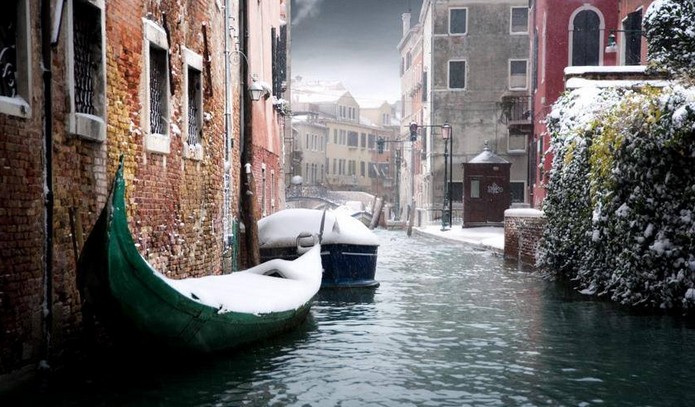
TOP SIGHTS IN VENICE
Saint Mark’s Basilica,
The cathedral of the Catholic Patriarchate of Venice is Saint Mark’s Patriarchal Cathedral. It is made for the remains of St. Mark the Evangelist, the city’s patron saint. The church is connected to the Doge’s Palace. It is at the eastern end of St. Mark’s Square, which used to be the political and religious centre of the Republic of Venice. The current building is the Third Church. It was started in 1063 to show how civic pride and civic awareness were growing in Venice.

St.Mark’s Square
St. Mark’s Square, or Piazza San Marco, is the central public square in Venice, Italy. It is also known as La Piazza. Campi is the name of all the other places in the city. At its southeast end, the Piazzetta is an extension of the Piazza that leads to the basin of San Marco. Most people think of these two places together because they are the social, religious, and political centres. Napoleon is often said to have said that Piazza San Marco was “the drawing room of Europe.”

Peggy Guggenheim Collection,
The Peggy Guggenheim Collection is an art museum in Venice, Italy. It is on the Grand Canal in the Dorsoduro neighbourhood. It is one of Venice’s most popular places to go. The collection is housed in Palazzo Venier Dei Leoni, an 18th-century palace that served as Peggy Guggenheim’s residence for 30 years. Some of the essential Italian Futurists and American Modernists who worked in styles like Cubism, Surrealism, and Abstract Expressionism have pieces in this collection. There are also sculptures there.

Basilica di Santa Maria Della Salute Church
Santa Maria Della Salute is a Roman Catholic Church and minor basilica in Punta Della Dogana, Dorsoduro Sestiere, Venice, Italy. It is on the narrow tip of the Punta Della Dogana, between the Grand Canal and the Giudecca Canal in the Bacino di San Marco. It looks out over the church as it enters Piazza San Marco from the water. The church was built in the popular Baroque style by Baldassare Longhena. He learned about architecture from Vincenzo Scamozzi. In 1631, building began.

Venice Rialto Bridge
The Rialto Bridge in Venice, Italy, is the oldest of the four bridges over the Grand Canal. It connects the sestieri of San Marco and San Polo. It was first built as a pontoon bridge in 1173, has been rebuilt several times since then, and is now a significant tourist attraction in the city.

Venice Gallerie dell’Accademia
The Gallerie dell’Accademia is a museum of art from before the 19th century. It is in the Scuola della Carità, on the right bank of the Grand Canal in the Dorsoduro neighbourhood. It used to be the gallery of the Accademia di Belle Arti di Venezia gallery, which is Venice’s art academy. In 1879, it became its institution, which is why the Ponte dell’Accademia and the Vaporetto stops are named after it.

Venice Doge’s Palace,
The Doge’s Palace is a Venetian Gothic-style palace and one of the most famous buildings in Venice, in northern Italy. The Doge of Venice, the most influential person in the Republic, lived in the palace. It was built in 1340 and grew and changed over the next 400 years. It became a museum in 1923 and is one of 11 museums run by the Fondazione Musei Civici di Venezia.

Church of San Giorgio Maggiore,
San Giorgio Maggiore was built in the 1600s, in northern Italy. It was built between 1566 and 1610 based on plans by Andrea Palladio. The church is a beautiful White marble basilica in the style of the Renaissance. From anywhere along the Riva Degli Schiavoni, the Piazzetta di San Marco shines above the blue waters of the lagoon in front of it. It is the main point of view.

Popular Activity
- Cultural Tour
- Food & Drink Tour
- Take a romantic Gondola ride
- Boat tour
- Bike Tour
- Chocolate tasting
- Soar over the city in a helicopter
- Wine-tasting tour
- Take a trip to the Dolomite mountains
- Sign up for a cooking class
- Climb St Mark’s Campanile
- Get romantic on a Casanova tour
- Walking tour
- Enjoy the immersive Traveling Opera performance
- Catch a cabaret dinner show
VENICE CITY DETAILS
Nearly a million people live in Venice’s metropolitan area, including cities like Bibione, Chioggia, and Eraclea. The city-state of Venice is in northern Italy, on the coast. It comprises many islands in the lagoon of Venice and a large amount of land. The commune consists of six towns, the most famous of which is the old city of Venice. There are also the islands of Giudecca, Murano, Burano, Torcello, Masorbo, and Sant’Erasmo. Other popular places in the commune are Lido and Mestre. There are six sestieri districts in the old city. Cannaregio, Castello, Dorsoduro, San Polo, Santa Croce, and then San Marco have essential landmarks and monuments. Different house numbers are used for each season.

Currency: Euro
City area: 414.57 km2 (160.07 sq mi)
Venice time zone: Time zone UTC+1 (CET)
Summer (DST) UTC+2 (CEST)
Official language: Italian
(Italy) dials: Code +39
Getting around in Venice
The first thing you should know about Venice is that it is a tiny city; consequently, if you stay in the town centre, you won’t need to take any means of transportation to move around the city. If you are outside the Centre, however, you will need to take some form of transportation. Walking from one end of Venice to the other can be accomplished in less a half an hour.
Travel cards and tickets
Venice Chorus Pass
The Chorus Pass is a tourist card that helps people save money on entrance fees to Venice’s old churches.
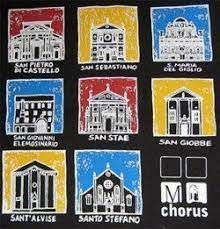
Rolling Venice Card
The Rolling Venice Card is perfect for young people who want to visit the city of canals. It has discounts for museums, monuments, and the city’s public transportation that are fun to use. Young people between the ages of 6 and 29 can use it. The Rolling Venice card costs € 6 (US$ 6.40).

Venezia Unica City Pass,
The Venezia Unica City Pass is a pass for travel that you can change to fit your needs. You can buy them online and early. Go to the website of the Venice Chamber of Commerce, Venezia Unica.
You can buy any of the tourist permits listed above. You can even get good deals if you buy them at least a week ahead of time. Prices also change with the time of year and the day of the week.

Local buses in Venice
On the islands of the floating city, there are no bus stops. But ACTV buses are the cheapest way to get from Marco Polo Airport in Venice to Piazzale Roma in the city Centre. Since water is the only way to get around the island, you can forget about city buses, taxis, and cars while on vacation in Venice. The mainland has a bus service. Santa Croce is the only neighbourhood on the island of Venice that can be reached by Bus and car. A ticket that goes only one way costs €1.50 and is suitable for 75 minutes.
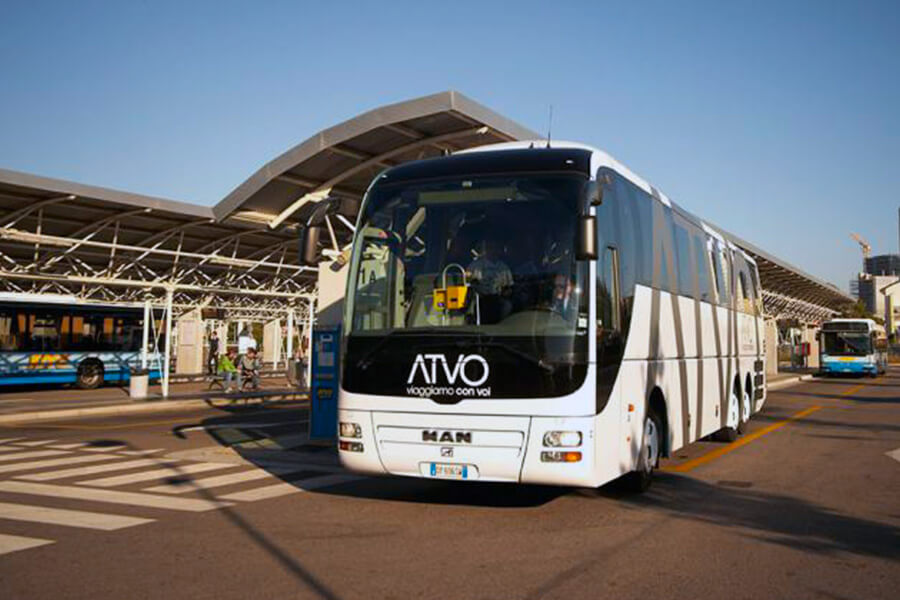
Venice Water Bus Services
The water all around Venice is one of the things that makes it so magical. Even though the city has “normal four-wheeled” buses, the best way to get around in the city center is by the canal. In Venice, all taxis, ambulances, and police cars, as well as the water buses called “Vaporetto,” are on the water. The vaporettos take the place of the urban buses in the city center. Compared to the buses on land, the water buses are more romantic. They have a specific “something” that you can only find in Venice.

Venice Water Taxis
The price of a water taxi in Venice is about the same as that of other ways to get around the city. Venice’s public transportation is not cheap. This includes the city’s water taxis, of course. A relaxing boat ride through Venice’s canals is only worth it if you’re there with a big group. The company, the distance, and the number of passengers set the prices for water taxis in the city. The cost of a water taxi from the Marco Polo Airport in Venice to the city center is between €105 and €135.

Venice Gondola Rides
A gondola is a traditional long and narrow boat used for rowing in Venice. One person, called a “gondolier,” uses one long oar to steer the ship. Gondolas are among the best things to see and do in Venice, and tourists love them. One of its benefits is that it can take you to parts of the city that would be hard to get to otherwise. A 30-minute gondola ride costs €80 (US$85.10), which is the official price. The price goes up to €100 (US$106.40) after 7 p.m.
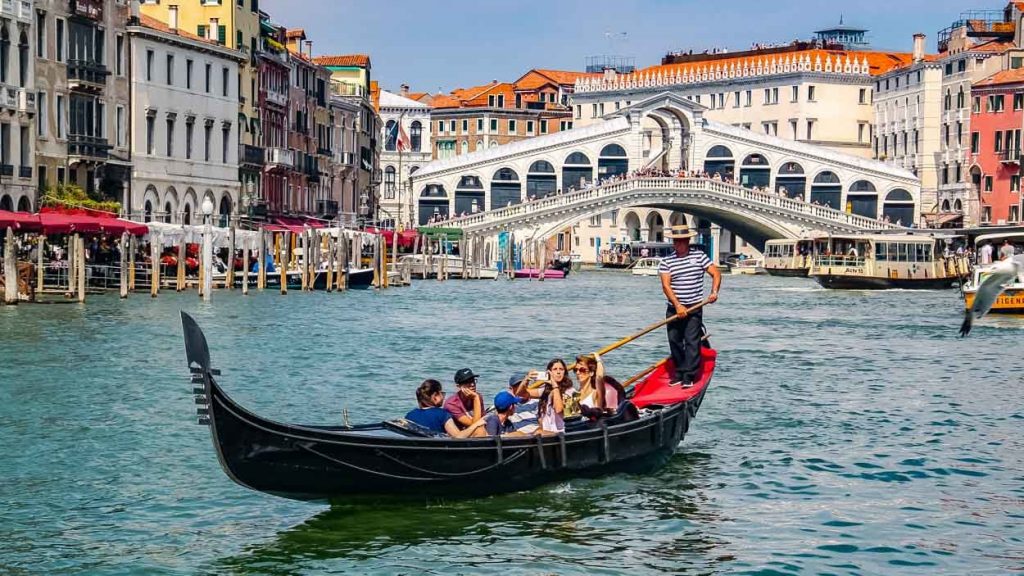
Venice Traghetti
Righetti is a big gondola that locals and tourists use to cross the Grand Canal, especially in places where none of the four bridges connects the Canal’s two sides. In Italian, a ferry is called spaghetti or a traghetto (singular).

VENICE CUISINE
A lot of the delicious food in Venice is made with seafood, polenta, and rice.
Visitors can also enjoy fish soup known as Zuppa di Pesce in Venice, while the neighboring town of Treviso is the origin of radicchio Trevisano. Small appetizers known as Cicchetti are typically served in Venice’s bars, and they are commonly consumed before lunch or dinner. However, they can also be ordered as a light meal, similar to Spanish tapas or Greek mezze.
Here, you can end the day with a tasty pastry and a cup of espresso. Wine from Venice is made from grapes grown around the city. Some of these are a citrusy solution, bubbly prosecco, and deep red Valpolicella. Popular drinks include the Peach Bellini, created in Venice, the Aperol Spritz, the Negroni, and other classic Italian drinks. Craft beer is becoming more popular in Venice, and many Irish pubs cater to young people.
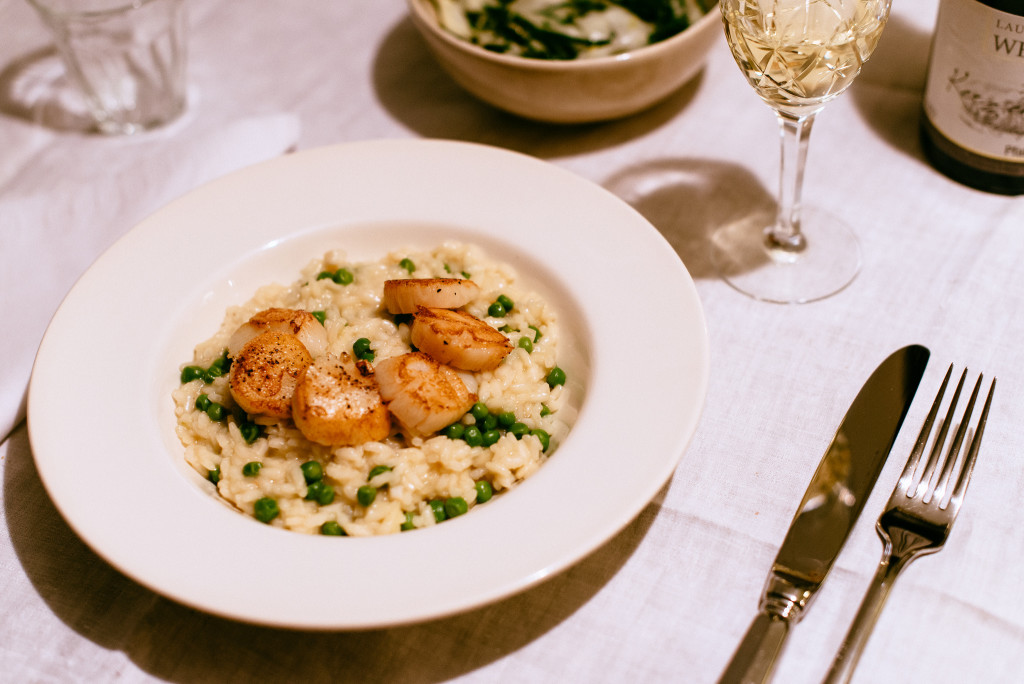

VENICE NIGHTLIFE
Even though Venice, Italy, has a lot of tourist-filled bars, streets, and canals, the nightlife scene is surprisingly quiet. In Rome and other Italian cities, parties often spill out into the streets and last until the early morning hours. But in Venice, most tourists return to their hotels after a long day of sightseeing because they are too tired to go out. If you’re looking for a drink after dinner, live music, or a chance to talk to locals, Venice’s streets don’t close down at night. Here are top picks for the best bars, clubs, and places to go bar-hopping in Venice.

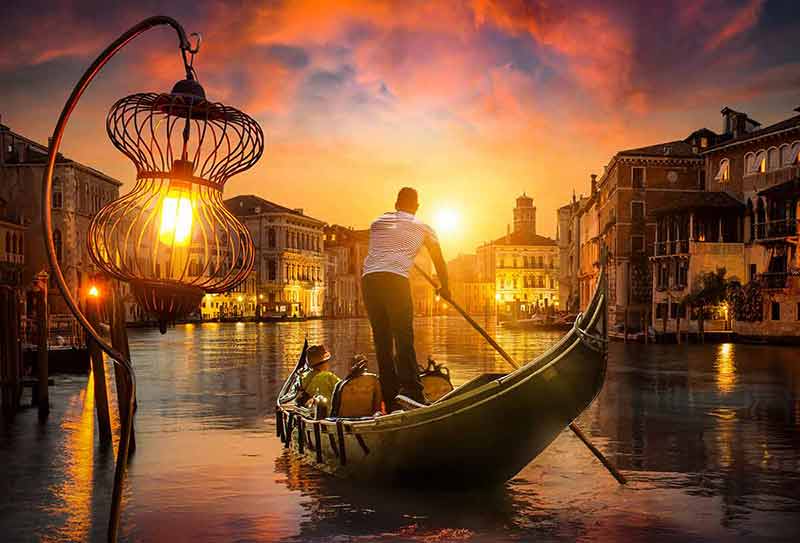
- Campo Santa Margherita
- Cannaregio’s Canalfront
- Cafè Noir
- Venice Jazz Club
- American Bar Tarnowska’s
- Il Mercante
- Skyline Rooftop Bar
- Harry’s Bar
VENICE ACCOMMODATION
Venice hotels are expensive because the historical city has a small area and is known worldwide. Prices are better at bed and breakfasts and guesthouses. Mestre, the central part of Venice, and Lido Island are where you can find low-cost options like camps and hostels. On the island of Murano, you can also find other places to stay. This is because buses and ferries make it easy to get to and from the center. But you can search for places to visit only you are planning your trip.


APPROXIMATE BUDGET?
How much money do you need to visit Venice? You should budget about 181 euros ($191) per day for your trip. It is the average daily price based on what other guests have spent. Also, the average hotel room cost for two people in Venice is €186 ($197). So, it costs about €2,527 ($2,679) for two people to spend a week. These average travel prices were all collected from other travellers to help you plan your travel budget.
Conclusion
Venice has a special place in the hearts of those who have been there. With its dreamy waterways, beautiful buildings, and long history, the city continues to be one of the most visited places in the world.
The city is facing the risk of sinking and is also under threat from climate change.
Think about how you affect this city and join the effort to protect this wonderful place.
FAQs
What is so famous about Venice?
Venice, also known as the “City of Canals,” “The Floating City,” and “Serenissima,” is probably one of Italy’s most beautiful cities. It is famous for its winding canals, striking architecture, and beautiful bridges.
Why was Venice built on water?
At first, people thought invaders and conquerors forced Venetians to leave the mainland in the 5th century. The idea was that making Venice on top of its lagoons would give the first people who lived there the safety they were looking for.
What is the best month to go to Venice?
The busiest and most expensive months to visit Venice are April, May, June, September, and October. The summers are cooler (the high 70s and 80s) than they are in the hotter inland towns of Italy.
Is Venice in Italy or France?
Venice, Italian Northern Italy’s Veneto area, is home to the city of Venezia, which serves as the capital of both the province of Venezia and the regions of Veneto. Venezia is also a major seaport.
What is a popular food?
Traditional dishes from Venice feature fish in a significant number of iterations. A few of the most famous words to come out of this region include bigoli in salsa (pasta in anchovy sauce), risotto al Nero di sepia (risotto made with cuttlefish ink), and sarde in saor (sardines preserved in a sweet and sour marinade).
Can you swim in Venice canals?
Swimming is prohibited throughout the historic center of Venice, including the canals and any other bodies of water in this area of the city.
How do houses in Venice stay dry?
There is no floating about in Venice’s architecture. They do this by perching themselves atop more than ten million tree trunks. These tree trunks serve as foundations, preventing the city from falling into the marched below it.
How many days in Venice is enough?
Spend 2-3 days in the floating city, and you’ll experience the city’s many highlights and visit a few of the surrounding islands, like Burano and Morano. With up to six days, you can add more local experiences.
Can I drink the water in Venice?
As a member of the EU, Italy has to follow strict rules about drinking water. The public health authority, the Environmental Protection Agency, and the local water service do thousands of tests on the water and say it is safe and unsuitable to drink. People think that this city has some of the best water in Italy.

